Myths about teaching can hold you back


- Year 10•
- Foundation
Identifying multiple transformations
I can identify what transformations have taken place.


- Year 10•
- Foundation
Identifying multiple transformations
I can identify what transformations have taken place.
These resources will be removed by end of Summer Term 2025.
Switch to our new teaching resources now - designed by teachers and leading subject experts, and tested in classrooms.
These resources were created for remote use during the pandemic and are not designed for classroom teaching.
Lesson details
Key learning points
- More than one transformation may have taken place.
- If the size has changed, one shape may be an enlargement of the other.
- If the orientation has changed, one shape may be a rotation of the other.
- If the shapes are mirrored, one shape may be a reflection of the other.
- If the shapes look identical but are in different places, one may be a translation of the other.
Keywords
Object - The object is the starting figure before a transformation has been applied.
Image - The image is the resulting figure after a transformation has been applied.
Vector - A vector can be used to describe a translation.
Invariant - A property of a shape is invariant if that property has not changed after the shape is transformed.
Common misconception
There is only one way to describe what has happened to an object to create its image.
Learning cycle 1 explores how different transformations can produce the same image. This is a good way of demonstrating that there is more than one possible description.
To help you plan your year 10 maths lesson on: Identifying multiple transformations, download all teaching resources for free and adapt to suit your pupils' needs...
To help you plan your year 10 maths lesson on: Identifying multiple transformations, download all teaching resources for free and adapt to suit your pupils' needs.
The starter quiz will activate and check your pupils' prior knowledge, with versions available both with and without answers in PDF format.
We use learning cycles to break down learning into key concepts or ideas linked to the learning outcome. Each learning cycle features explanations with checks for understanding and practice tasks with feedback. All of this is found in our slide decks, ready for you to download and edit. The practice tasks are also available as printable worksheets and some lessons have additional materials with extra material you might need for teaching the lesson.
The assessment exit quiz will test your pupils' understanding of the key learning points.
Our video is a tool for planning, showing how other teachers might teach the lesson, offering helpful tips, modelled explanations and inspiration for your own delivery in the classroom. Plus, you can set it as homework or revision for pupils and keep their learning on track by sharing an online pupil version of this lesson.
Explore more key stage 4 maths lessons from the Further transformations unit, dive into the full secondary maths curriculum, or learn more about lesson planning.

Licence
Prior knowledge starter quiz
6 Questions
Q1.A vector can be used to describe a __________.
Q2.Andeep reflects shape A in the line $$x=4$$ to A'. He then reflects A' in the line $$y=4$$ to A''. Select the coordinates of P' and P''.
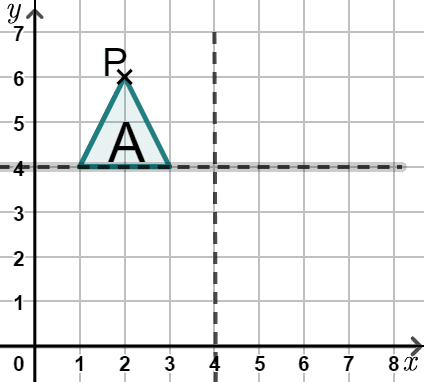
Q3.Sofia translates shape A by $$\begin{pmatrix} 1 \\ -3 \\ \end{pmatrix}$$ to A'. She then reflects A' in the line $$x=5$$ to A''. Select the coordinates of P' and P''.
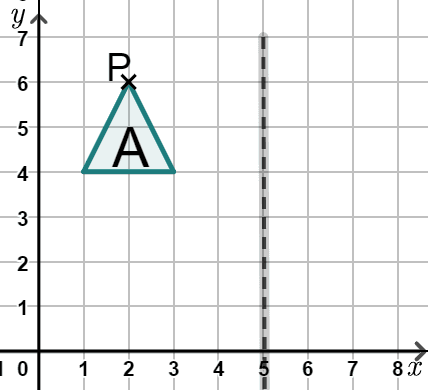
Q4.Laura is using technology to transform some shapes. She wants to use Desmos to rotate a shape 45° clockwise. Which of these angles should Laura type into Desmos?
Q5.Here are some buttons that you can use in Desmos for transformations. Match each button to its function.
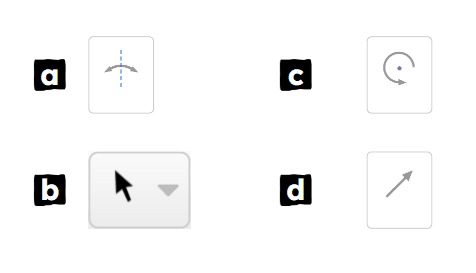
Button a -
reflects object
Button b -
selects object
Button c -
rotates object
Button d -
translates object
Q6.Match each transformation to its description.
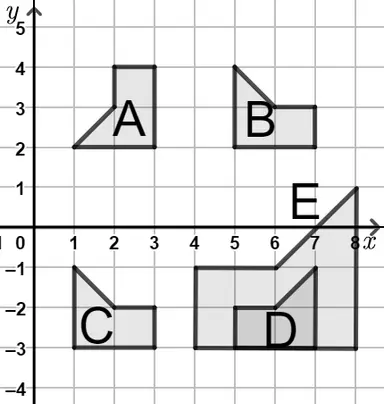
Shape E to shape D -
Enlargement, scale factor $$\frac{1}{2}$$, about $$(6,-3)$$
Shape D to shape C -
Reflection in the line $$x=4$$
Shape C to shape B -
Translation by $$\begin{pmatrix} 4 \\ 5 \\ \end{pmatrix}$$
Shape B to shape A -
Rotation $$90$$° anticlockwise about $$(4, 1)$$
Assessment exit quiz
6 Questions
Q1.A point on a shape is __________ if that point has not changed location after the shape is transformed.
Q2.Select the information you should give to fully describe a rotation.
Q3.What type of transformation maps shape A onto shape B?
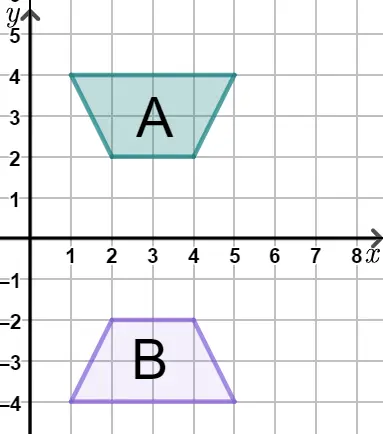
Q4.Describe one possible transformation from A to B that has zero invariant points.
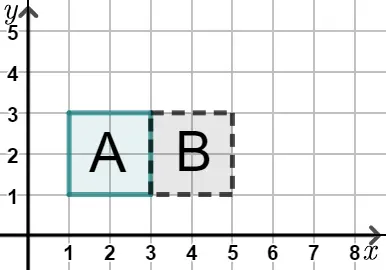
Q5.Describe the transformation that maps shape A onto shape E.
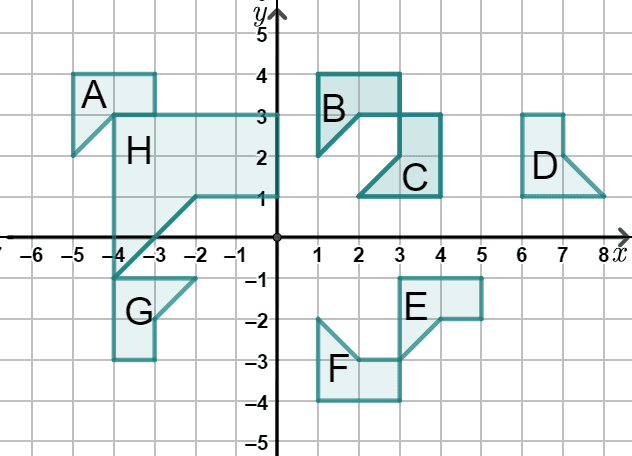
Q6.Select the two transformations needed to map shape A onto shape C.


